Abstract
The effect of several metal ions on the production of diphtheria toxin was tested. By using the gel immunodiffusion system for detecting toxin, a wide range of metal ion concentrations was conveniently surveyed. Five divalent cations, Fe2+, Cu2+, Co2+, Ni2+, and Mn2+ inhibited toxin production within a range of concentrations that did not inhibit growth of the producing strain. Growth and toxin production were inhibited at identical concentrations by both Cd2+ and Zn2+, whereas Al3+ and Sr2+ affected neither growth nor toxin production over the range of concentrations tested. The data showed that Fe2+ was the most effective inhibitor on an equivalence basis, followed by Cu2+, Co2+, and Ni2+ in descending order. All eight strains of Corynebacterium diphtheriae chosen from diverse ecological origins responded similarly to all metals at similar concentrations. A mutant strain which produces toxin at Fe2+ concentrations 500 times greater than are inhibitory for the parent strain had simultaneously acquired resistance to inhibitory concentrations of Cu2+, Co2+, Ni2+, and Mn2+. This suggests that there is at least one common point in the activity of all these metal ions, and that toxin may respond broadly to changes in metal ion concentrations in the environment.
Full text
PDF
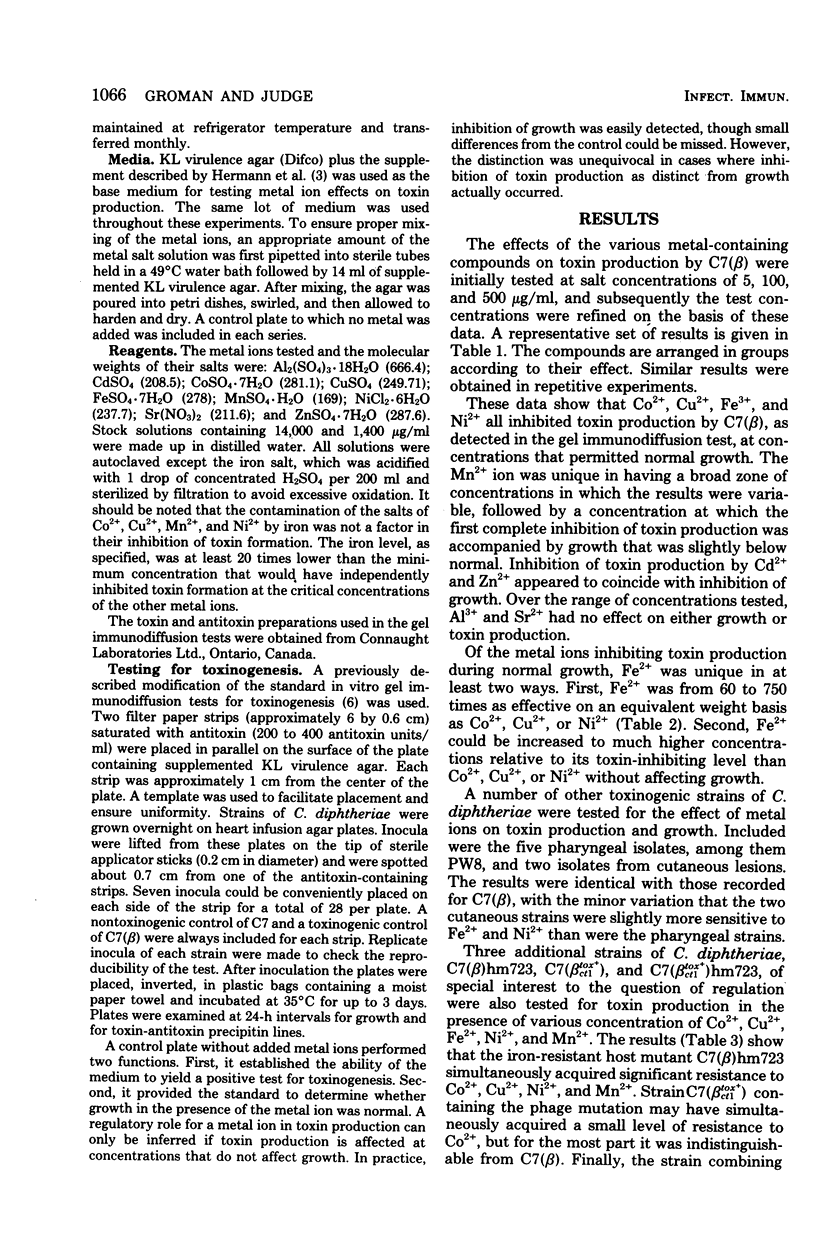
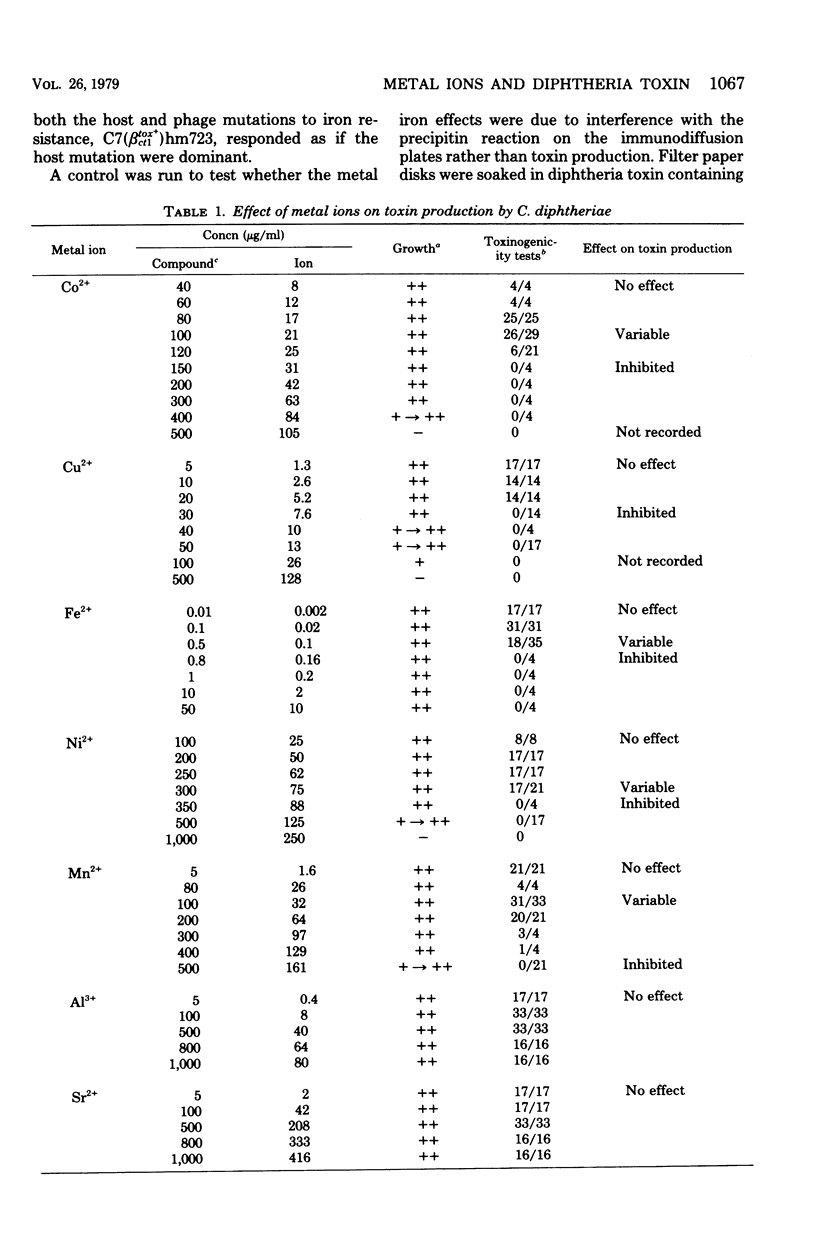
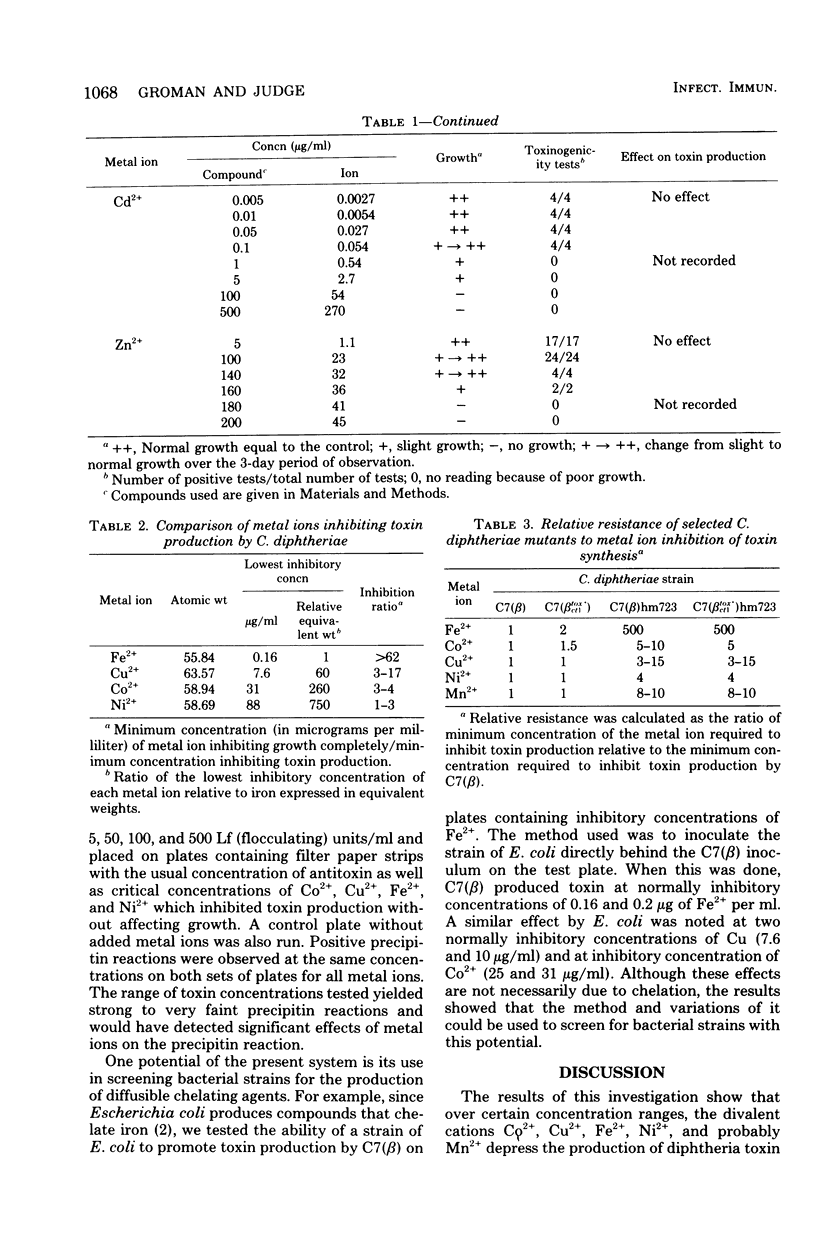
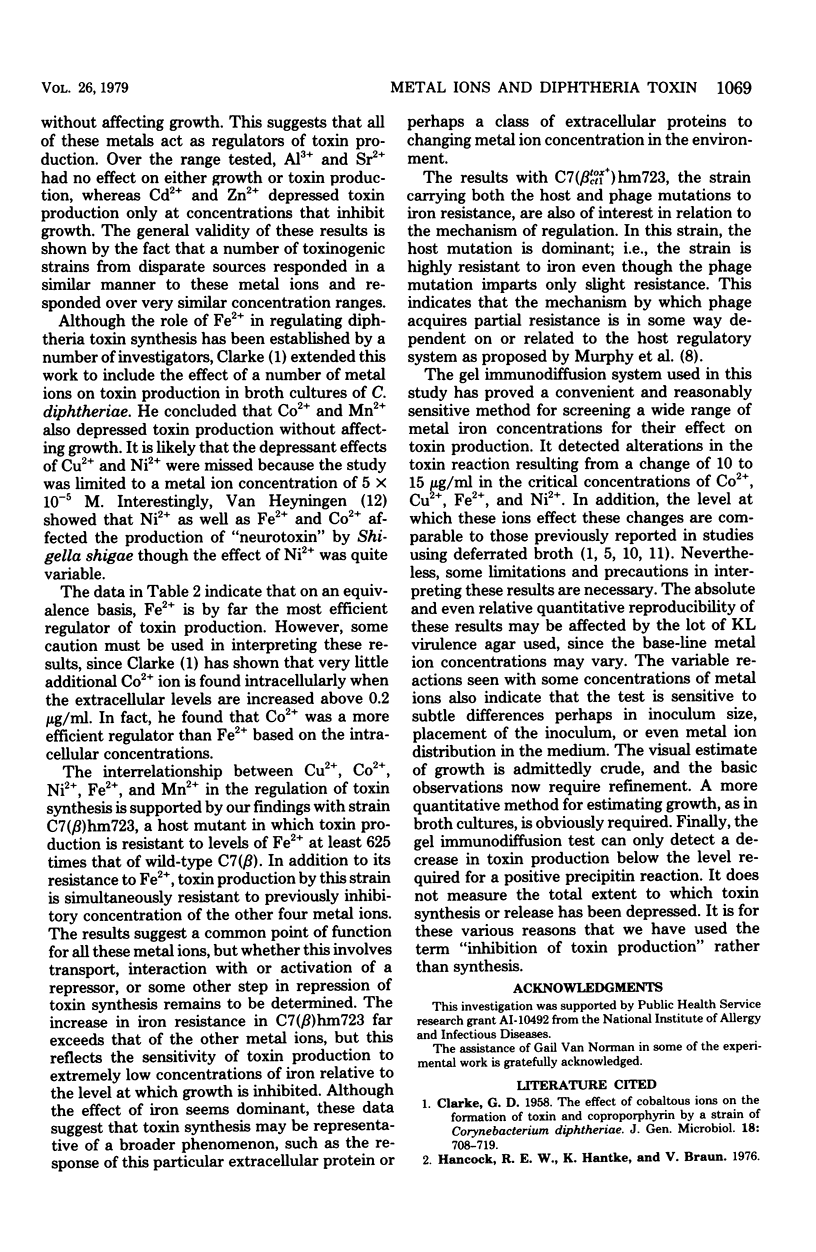
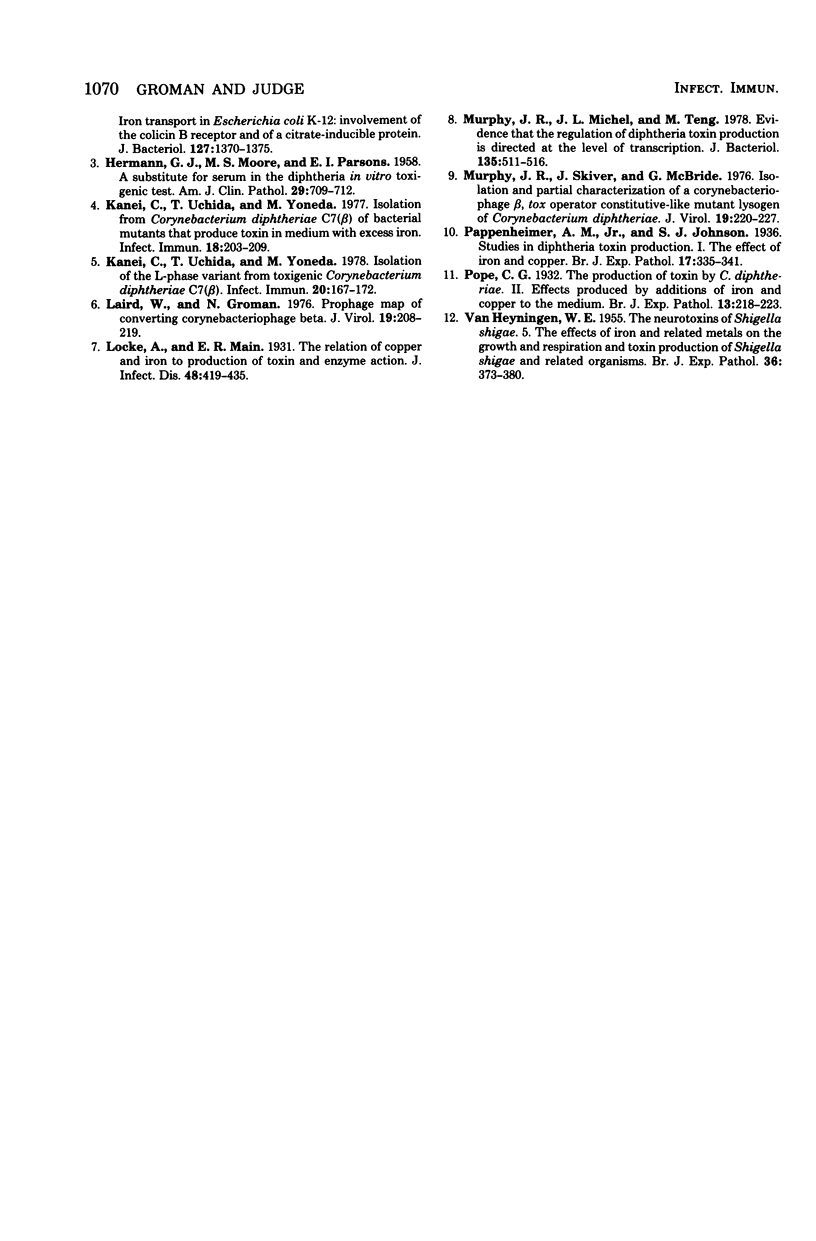
Selected References
These references are in PubMed. This may not be the complete list of references from this article.
- CLARKE G. D. The effect of cobaltous ions on the formation of toxin and coproporphyrin by a strain of Corynebacterium diphtheriae. J Gen Microbiol. 1958 Jun;18(3):708–719. doi: 10.1099/00221287-18-3-708. [DOI] [PubMed] [Google Scholar]
- Kanei C., Uchida T., Yoneda M. Isolation from corynebacterium diphtheriae C7(beta) of bacterial mutants that produce toxin in medium with excess iron. Infect Immun. 1977 Oct;18(1):203–209. doi: 10.1128/iai.18.1.203-209.1977. [DOI] [PMC free article] [PubMed] [Google Scholar]
- Kanel C., Uchida T., Yoneda M. Isolation of the L-phase variant from toxigenic Corynebacterium diphtheriae C7(beta). Infect Immun. 1978 Apr;20(1):167–172. doi: 10.1128/iai.20.1.167-172.1978. [DOI] [PMC free article] [PubMed] [Google Scholar]
- Laird W., Groman N. Isolation and characterization of tox mutants of corynebacteriophage beta. J Virol. 1976 Jul;19(1):220–227. doi: 10.1128/jvi.19.1.220-227.1976. [DOI] [PMC free article] [PubMed] [Google Scholar]
- Laird W., Groman N. Prophage map of converting corynebacteriophage beta. J Virol. 1976 Jul;19(1):208–219. doi: 10.1128/jvi.19.1.208-219.1976. [DOI] [PMC free article] [PubMed] [Google Scholar]
- Murphy J. R., Michel J. L., Teng M. Evidence that the regulation of diphtheria toxin production is directed at the level of transcription. J Bacteriol. 1978 Aug;135(2):511–516. doi: 10.1128/jb.135.2.511-516.1978. [DOI] [PMC free article] [PubMed] [Google Scholar]
- VAN HEYNINGEN W. E. The neurotoxin of Shigella shigae. 5. The effect of iron and related metals on the growth, respiration and toxin production of Shigella shigae and related organisms. Br J Exp Pathol. 1955 Aug;36(4):373–380. [PMC free article] [PubMed] [Google Scholar]


